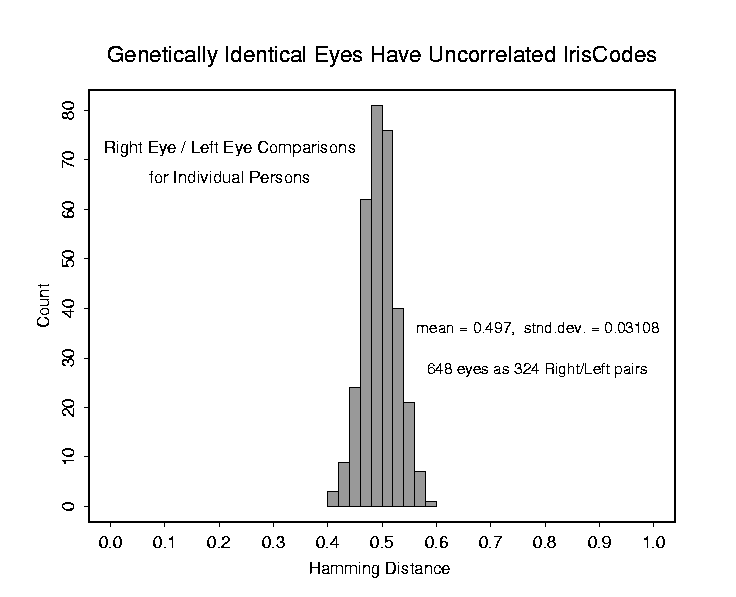
Persons who are genetically identical share all their genotypic features, such as gender, blood group, race, and DNA sequence. All biological characteristics of individuals can be placed somewhere along this "genotypic-phenotypic" continuum of genetic determination, with some features (e.g. gender; iris sequence) placed firmly at either endpoint. Other features such as facial appearance reveal both a genetic factor (hence identical twins "look identical") and an epigenetic factor (hence everyone's facial appearance changes over time).
Persons who share 50% of their genes (e.g. a parent and child; ordinary sibblings; fraternal twins; and double cousins) show a corresponding partial agreement in their genotypic features such as facial appearance at a given age, but no additional agreement in their epigenetic features.
The importance of these genetic aspects of biometric templates is that they directly influence the two basic error rates: False Match and False non-Match. Nearly one percent of persons have an identical twin, with whom they share all genotypic features such as their entire DNA sequence. This creates a minimum False Match rate of 1% (across a population) which we may call the biometric's genotypic error rate. Similarly, the tendency for some biometric features (such as facial appearance) to change over time creates a minimum rate of False Rejections, which we may call the biometric's phenotypic error rate. To maximize individuality, distinctiveness, and randomness, a biometric feature should be entirely epigenetic. To maximize stability over the life span, a biometric feature should not change with phenotypic development.
The mean Hamming Distance between genetically identical irises
is 0.497 with standard deviation 0.031, which is
statistically indistinguishable from comparisons between
9.1 million pairings of genetically unrelated irises (histogram provided
here).
This shows that the detailed
phase structure extracted from irises by the phasor demodulation process
is purely epigenetic, so performance is not limited (as it is for face
recognition, DNA, and some other biometrics) by the birth rate of identical twins
or by the existence of partial genetic relationships.